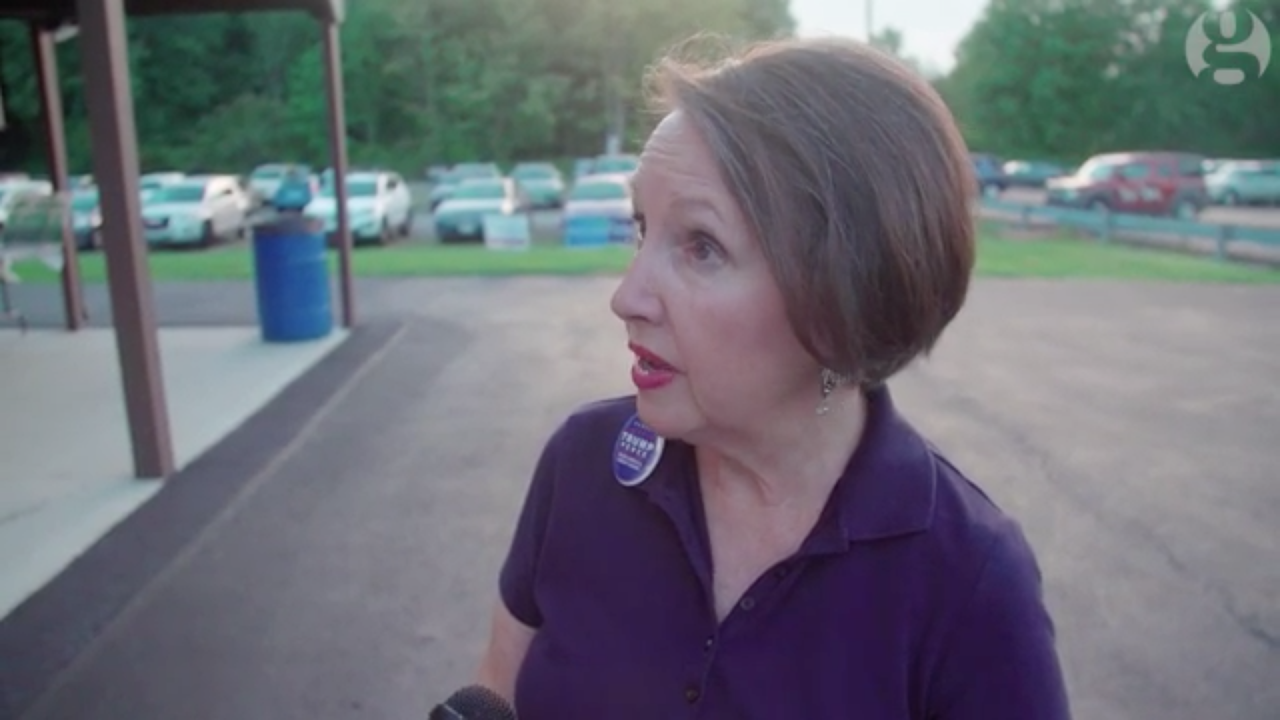
Kathy Miller, who was Donald Trump's Youngstown, Ohio-area campaign chair, quit her post after The Guardian published an interview in which she said, among other things, that there was no racism in the US before the election of President Barack Obama. (Photo: The Guardian)
Because of its potential for producing crossover Democratic votes for him in this year’s presidential race, Republican nominee Donald Trump has been paying a lot of attention to Youngstown, Ohio this year. This week, the old mill town gave him the kind of attention he didn’t want.
The quick resignation of local Trump campaign chair Kathy Miller, after a series of jawdropping remarks in an interview with The Guardian — including her opinion that racism did not exist until President Barack Obama took office — and the Trump campaign’s immediate decision to replace her with a Youngstown African-American talk show host suggest that maybe the blunt-spoken billionaire isn’t as enthusiastic about political incorrectness as he purports to be.
Trump’s campaign has encouraged people like Miller to claim their racism openly and defiantly. We’ve seen evidence repeatedly, such as in a Plain Dealer reporter’s summary of the racist comments he’s received from Trump supporters or a widely-circulated New York Times video of comments from supporters at Trump rallies. And while Trump certainly fueled the birther movement, it grew legs at tea party rallies with laments about the loss of the “real” America. The horrifyingly repetitious pattern of police officers shooting unarmed black men has made the underlying racism in American culture not only visible but deadly, while pushback against the Black Lives Matter movement makes clear that many white people firmly believe, like Miller, that people of color face no significant barriers.
But the Miller episode also tells us something important — and counter to some stereotypes — about the face of American racism in 2016.
Because polls show strong support for Trump among whites without college degrees (the most commonly used proxy for working-class status), and because, as Jack Metzgar has argued, the “narrating class” takes some comfort in ascribing racism to the working class, commentaries about this year’s election often conflate racism and working-class status.
The idea that Trump’s popularity reflects the racism of the white working class persists despite reports showing that his supporters don’t necessarily fit the stereotypical definition of the working class as blue-collar workers. They generally earn more than the median income, and they include many people like Kathy Miller, a real estate agent — small-business owners and independent contractors, not just longtime auto workers and former steelworkers. Jonathan Rothwell’s analysis of Gallup poll data suggests the strongest predictor of support for Trump is not class status but white racial isolation. Add in the age factor and the insecurity of retirees and pensioners — as Miller notes in her interview with The Guardian, most of Trump’s supporters in Mahoning County are over 60 — and it’s clear that, if nothing else, to rely on “white working class” as a simple descriptor for Trump’s supporters masks a number of other issues. But it sure makes critiquing them easier.
This is not to say that racism is not a factor among white working-class people. It is. We see evidence of that in working-class voting patterns. For example, in 2012, about 60 percent of Ohio voters did not have a college degree (so pollsters would call them working-class regardless of their jobs or income). Slightly more than half of them voted for Obama, according to CNN exit polls. But those working-class voters divided along racial lines. While the president won a majority of working-class votes in Ohio, only 41 percent of whites voted for him. Obama won the “working-class vote” in Ohio because a large majority of people of color supported him.
Miller’s comments are just the latest outbreak of overt racism in this year’s election, and she may well reflect a more widespread if less clearly articulated racism among white voters in Ohio. We shouldn’t just accept that, but unfortunately, condemning racism will neither eliminate it nor persuade voters to support Hillary Clinton. No doubt, far too many will stand with Miller, who apologized for creating a distraction in the campaign but insisted that her statements were accurate. Voters who believe that Trump’s racist, xenophobic and sexist comments are “telling it like it is” will not be persuaded by anything Clinton says, much less by criticism from the media or by Twitter comments.
Yet in Ohio and across the country, some white working-class voters could still be won over. In The White Working Class Today, Andrew Levison analyzes white working-class voting in the 2012 election, and what he found explains why politicians and pundits pay so much attention to this demographic during election years. Levison argues that the white working class divides into thirds: one solidly Democrat and another solidly Republican, but also a significant group — a bit less than a third — whom he describes as “open-minded.” The parties tend to hold their relatively large thirds in presidential elections, though long-held party loyalties seem less reliable this year on both sides. Between longtime Democrats who are defecting and the “open-minded,” including both independents and people who haven’t voted for a number of years, the Republicans are drawing strong support in Ohio. To have a chance in this battleground state, Clinton needs to focus on those who might still be persuaded to support her.
A campaign that highlights the racism of Trump and his supporters might appeal to some of those open-minded voters, but it won’t be enough. What these undecided — or simply uninspired and uncommitted — voters need is attention to the economic woes that, in many cases, feed their resentment of others. Nor is it enough to harp on trade as the problem. As Ohio steelworker Jose Arroyo told The Guardian, “People don’t understand trade policies. What they do understand is they used to work at a place that paid them $80,000 a year, and now they’re working two jobs to make $30,000 a year.” The working class needs a believable economic narrative involving wages and job growth, as well as trade. Not only has Clinton failed to offer such a narrative, but as the party in power, Democrats are being held responsible for the continuing struggles of the working class. As we head into the last weeks of the campaign, Clinton needs to strengthen and clarify the story she has to tell about creating jobs, improving wages and benefits, and supporting working families.
Even if Clinton manages to eke out a win in Ohio, which seems unlikely, Youngstown should take very seriously the hatred and divisiveness of this year’s election. What we heard from Miller this week is, sadly, nothing new in a community that was, for many years, the fourth most segregated metropolitan area in the US. It reflects the long history of racial division that, as we wrote almost 15 years ago in Steeltown USA: Work and Memory in Youngstown, continues to hold this community back. If anything good can come out of this latest negative story emerging from Youngstown, perhaps it will give the community another opportunity to deal with its racism.





